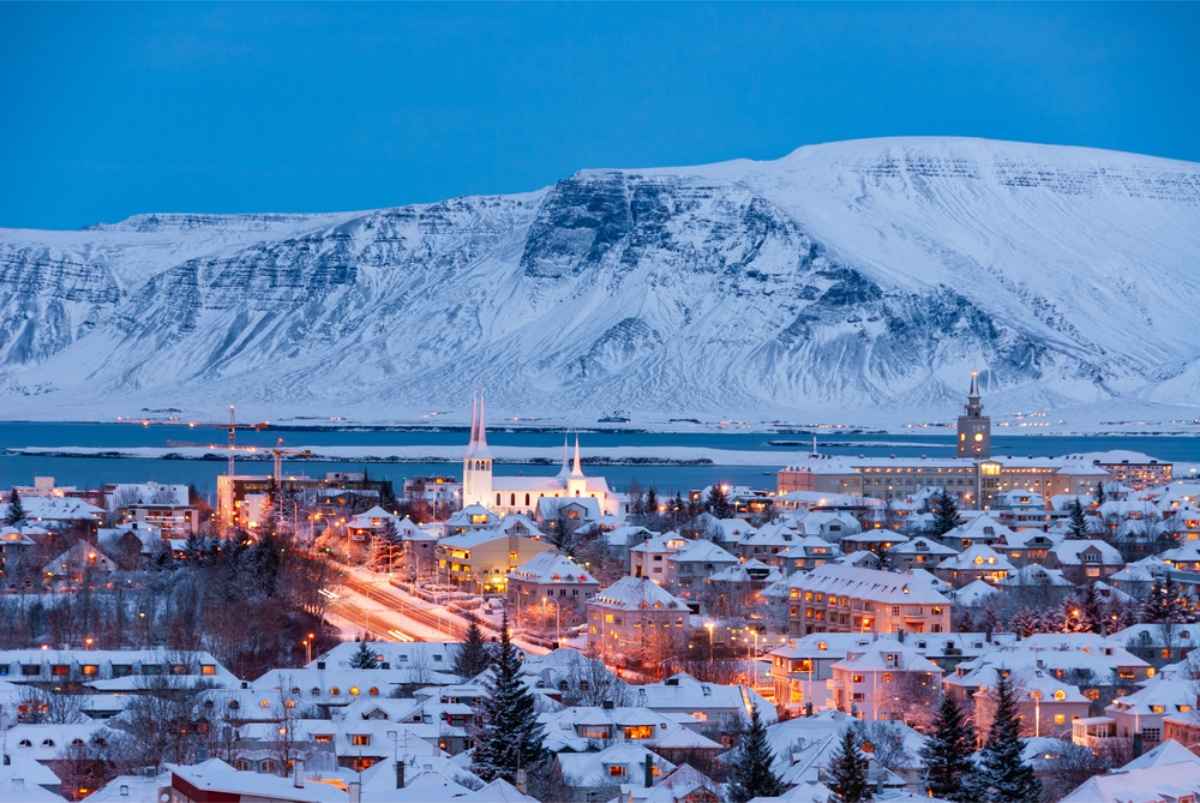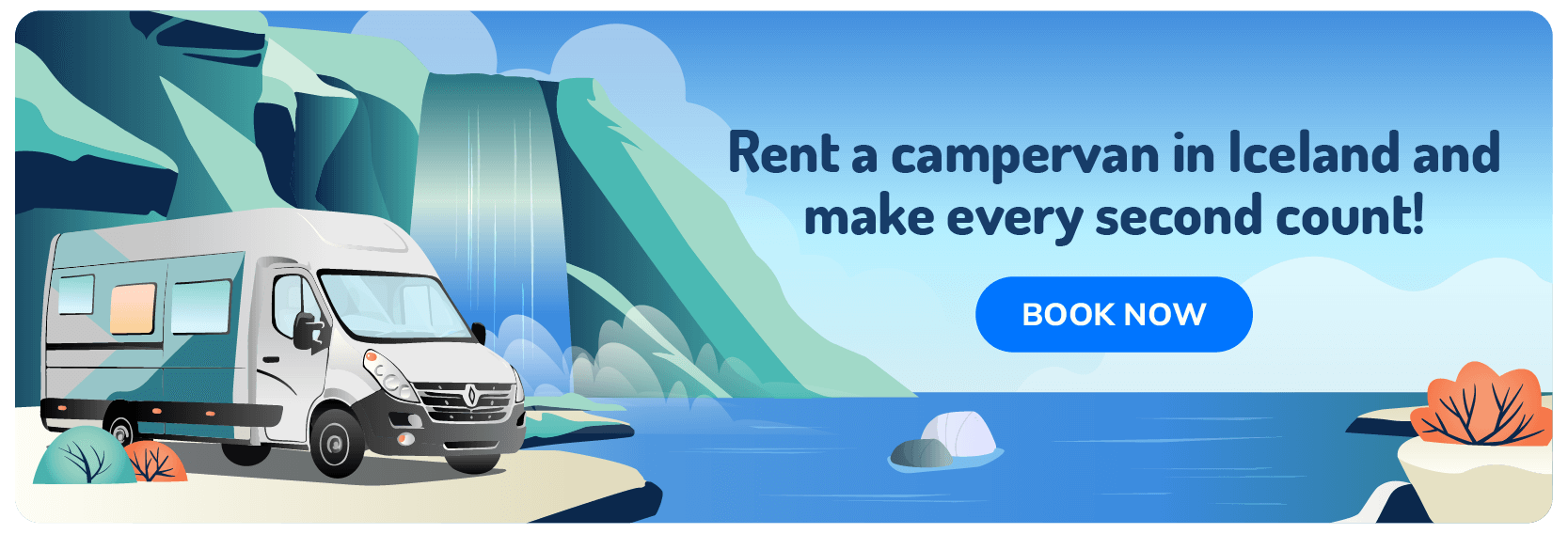Hi, there, adventure seekers and fellow explorers! It’s your trusted Icelandic motorhome crew here bringing you the lowdown on how to explore the island without burning a hole in your pocket. With a few budget-friendly tricks up your sleeve and by choosing the cheapest time to visit Iceland, you’ll soon be chasing waterfalls and strolling on black sand beaches without having to remortgage the house.
So, grab a cup of coffee and let’s start planning your cost-effective trip of a lifetime to the Land of Fire and Ice!
Why Iceland Can Be Expensive – and How to Avoid It
If you’re not a local, making local mint, a trip to Iceland can be expensive. This is for a myriad of reasons, such as the mere fact that we’re an island and the logistics of getting things there come at a hefty price tag. That’s why you’ll need some insider insights and a few tips and tricks to make your holiday budget stretch further and last longer.

Main Cost Drivers: Flights, Lodging, Food, and Tours
First, let’s check out where your money goes when visiting Iceland:
Flights
Your first challenge will be finding a flight that’ll get you there without breaking the bank, and believe us, some of those peak season summer prices can be higher than your plane's elevation. So, here’s the deal:
- Try to book flights well in advance as prices tend to be cheaper.
- Keep an eye out for specials and discounts, and try to book with cheaper airlines such as PLAY.
- Travel during our off season, which can be in the months of September to May.
- Also, try to book mid-week flights (these also tend to be cheaper).
Lodging
No matter where you go in the world, accommodation will always take the biggest chunk out of your holiday budget. So, making a budget-friendly choice is crucial. Needless to say, hotels will not come cheap. Guesthouses and AirBnbs tend to be slightly less expensive, but you’ll still feel the sting when swiping your card.
A budget-friendly alternative is to either book into a hostel or go camping. For the most versatile and cost-effective accommodation, opt for a motorhome rental in Iceland. This way, you’ve taken care of both accommodation and transport with just one expense, and you can go camping in comfort.
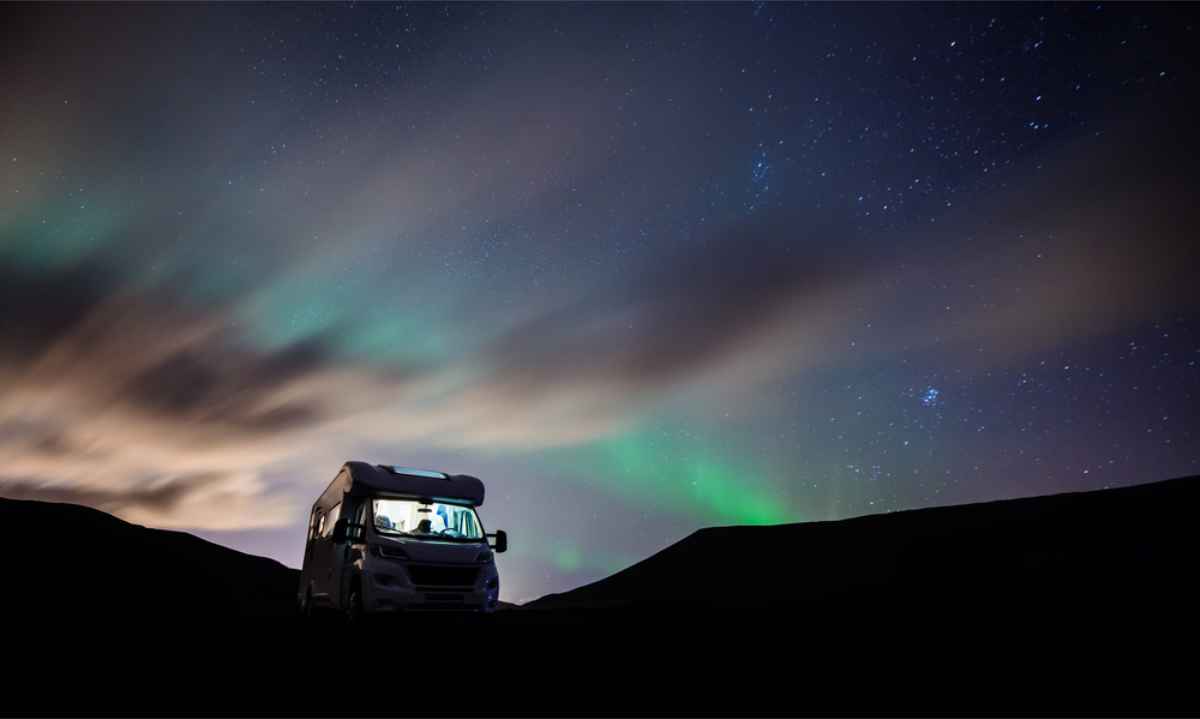
Food
We always recommend that visitors try out some of our local cuisine, but dining out should definitely not be an everyday occurrence if you’re traveling on a budget. The best way to save a few bucks on food is by focusing on buying groceries and cooking for yourself. Also, stick to some of our more budget-friendly grocery shops such as Bonus and Kronan.
Tours
You’ll find plenty of exciting tour options here in Iceland; everything from glacier hiking to whale watching, dog sledding, and much, much more. But if you’re traveling on a budget, you’ll need to be extremely picky about which of these makes it onto your trip itinerary, since these costs add up fast. Whenever possible, it’s best to DIY your own self-drive tour, channel your inner tour guide, and Google people and places you want to learn more about.
Why Renting a Motorhome is the Smartest Budget Option
We’ve already touched on a few perks of having a motorhome, but there’s much more:
- It gives you the ultimate flexibility and freedom; there’s no tour guide rushing you according to their schedule or pre-booked accommodation with check-in times breathing down your neck.
- Having your own kitchen with you wherever you go makes it easy to cook your own food, saving on food expenses.
- Not only do you save on accommodation expenses because a motorhome takes care of both your accommodation and transport, but you can also take advantage of our affordable campsites. You can add further discounts to your stays if you get the Camping Card.
- Camping like this can be the most immersive experience while cruising through the Icelandic landscape, and you can often have a front-row seat to many of our most famous attractions, such as at Skogar Campsite with Skogafoss Waterfall right outside your door.
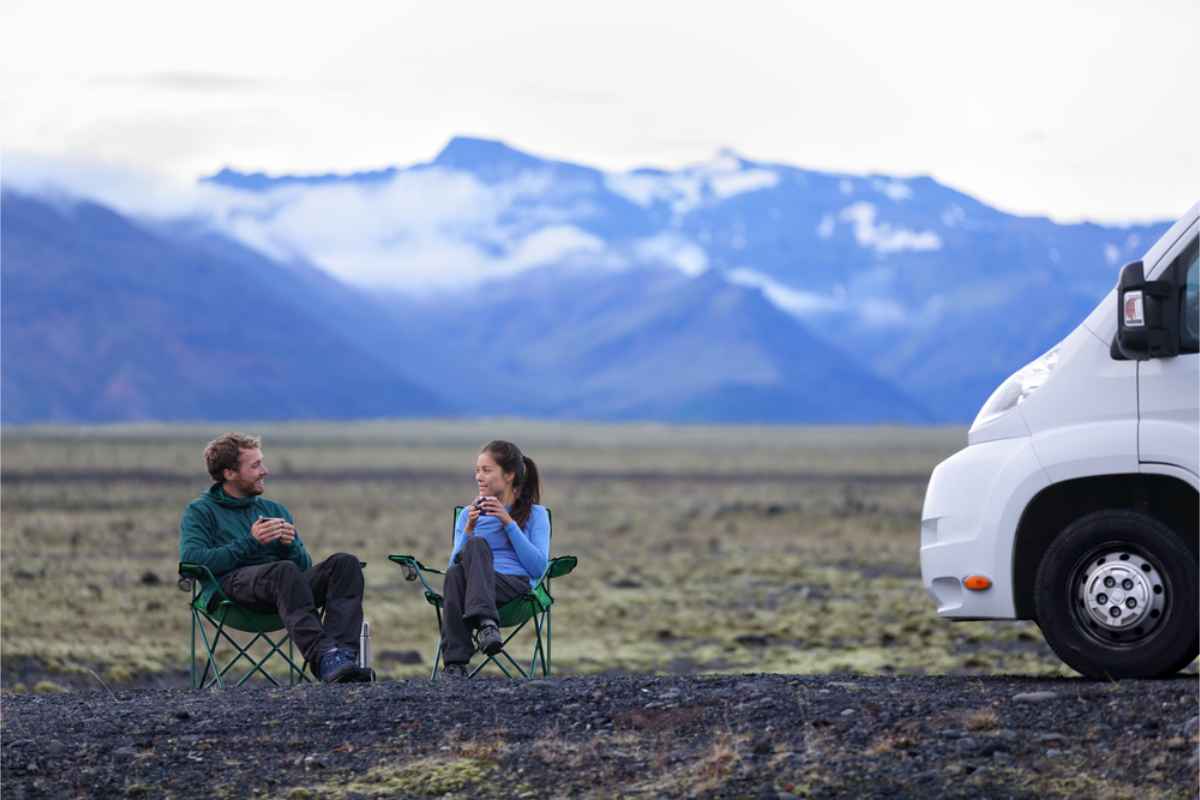
When is the Cheapest Time to Visit Iceland?
So, when should you travel to Iceland to get the most bang for your buck? Consider the following before making your final decision:
The Off-season: Months, Weather, and Price Drops
Travel during Iceland’s off-season (also known as Iceland’s low season) falls between mid-September and mid-May. During this period, you’ll find fewer crowds and lower prices all over Iceland.
The biggest reason for this period being our off-season is that the weather’s turned colder and harsher, and you don’t have too many daylight hours to play around with. However, this period also has its own unique benefits, such as snow-covered mountains, spotting the Northern Lights, and checking out waterfalls with frosty tentacles dangling down the cliffs.
Flight and Motorhome Rental Deals by Month
As mentioned, flights are another big expense of an Iceland adventure. Therefore, it’s no surprise that one of the questions we often get asked is “When is the cheapest time to fly to Iceland?”
The best time to fly to Iceland is between November and February, provided you avoid our busy festive season and New Year period. Luckily, motorhome rentals also play along during these times, and you can get quite a few bargains (sometimes up to 50% off!), especially during mid-week.
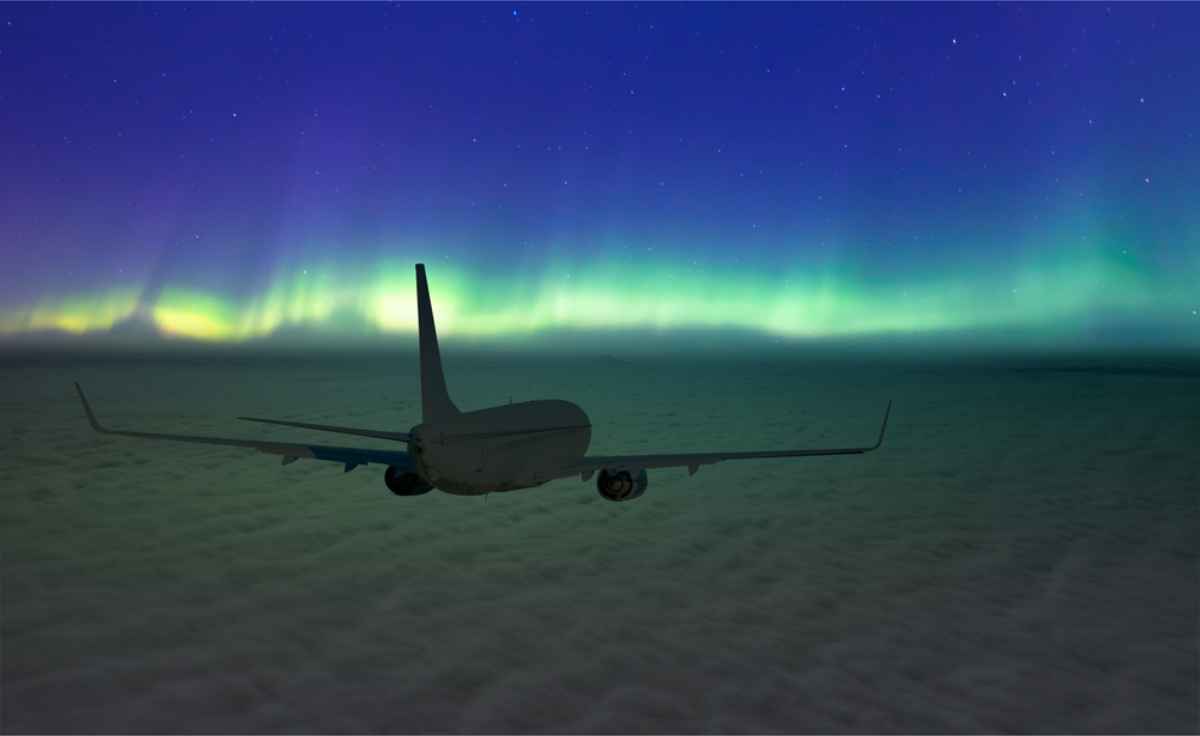
Price Comparison: High Season vs. Low Season
Want to know what type of savings you’re looking at when it comes to the high season vs. the low season? Take a look at our easy-to-reference comparison table below:
|
Expense |
High Season (June to Aug) |
Off Season (Oct to April) |
|
Flights |
$500 - $900+ |
$250 - $500 |
|
Campervan Rental |
$150 - $300 per day |
$70 - $150 per day |
|
Campsites |
$20 - $30 per person per night |
$10 - $20 per person per night |
|
Tours |
Full price |
Many discounts |
*The prices mentioned above are accurate as of August 2025.
Best Months for Budget Motorhome Travel During the Off-season
Let’s take a closer look at the off-season months to see which will be the best fit for you:
October and November: Low Prices, Quiet Roads
October and November are months of super savings and solitude. Visitors can find plenty of discounts on flights and motorhome rentals, and traffic on the island (both on foot and four wheels) has significantly died down. The reason for our quiet roads is mainly the turn in our weather.
Temperatures dip to averages of 0 to 7 degrees (32 to 45 degrees Fahrenheit), and you can encounter anything and everything from snow and ice to winds of 35+ kilometers an hour. Just keep in mind that these weather conditions can cause sudden road closures, and our F-roads (in the Westfjords and the Highlands) are kept closed throughout the colder months of the year.
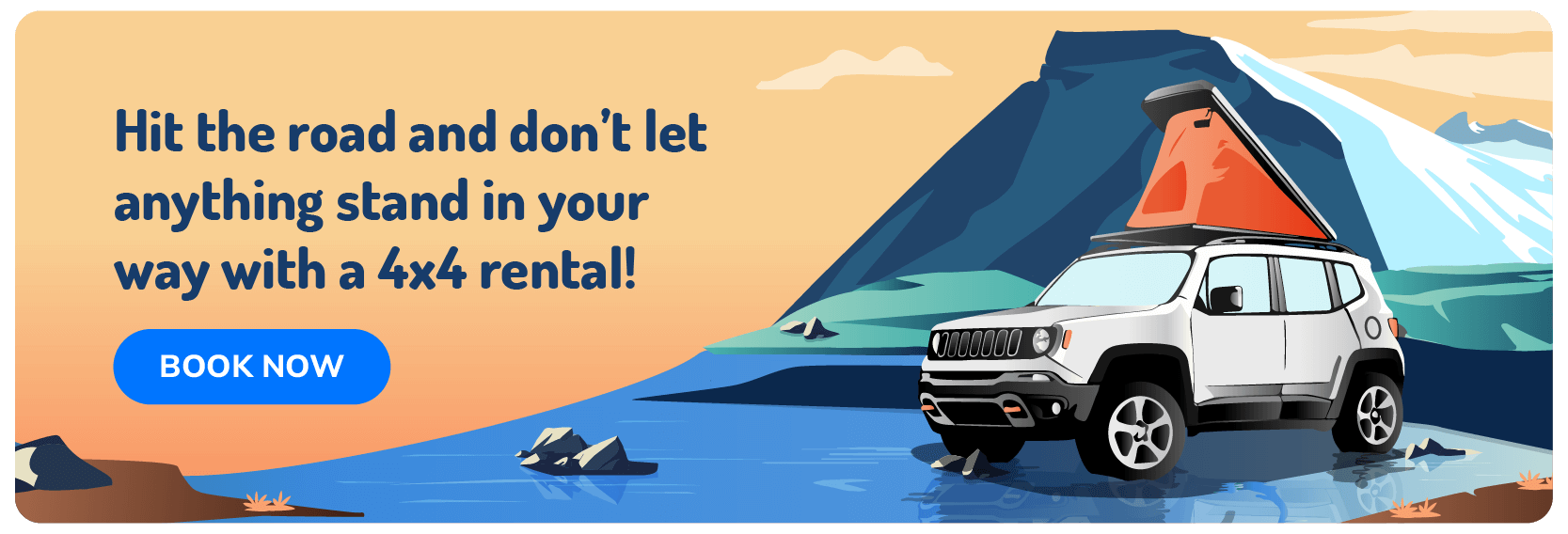
This can obviously impact your trip if you’re planning on road-tripping around the island in a motorhome, so keep your itinerary flexible, do your research, and choose your road trip routes carefully. Some of our campsites will also be closed, so do make inquiries ahead of time. However, don’t get stuck on the few drawbacks, so you end up missing out on all the benefits.
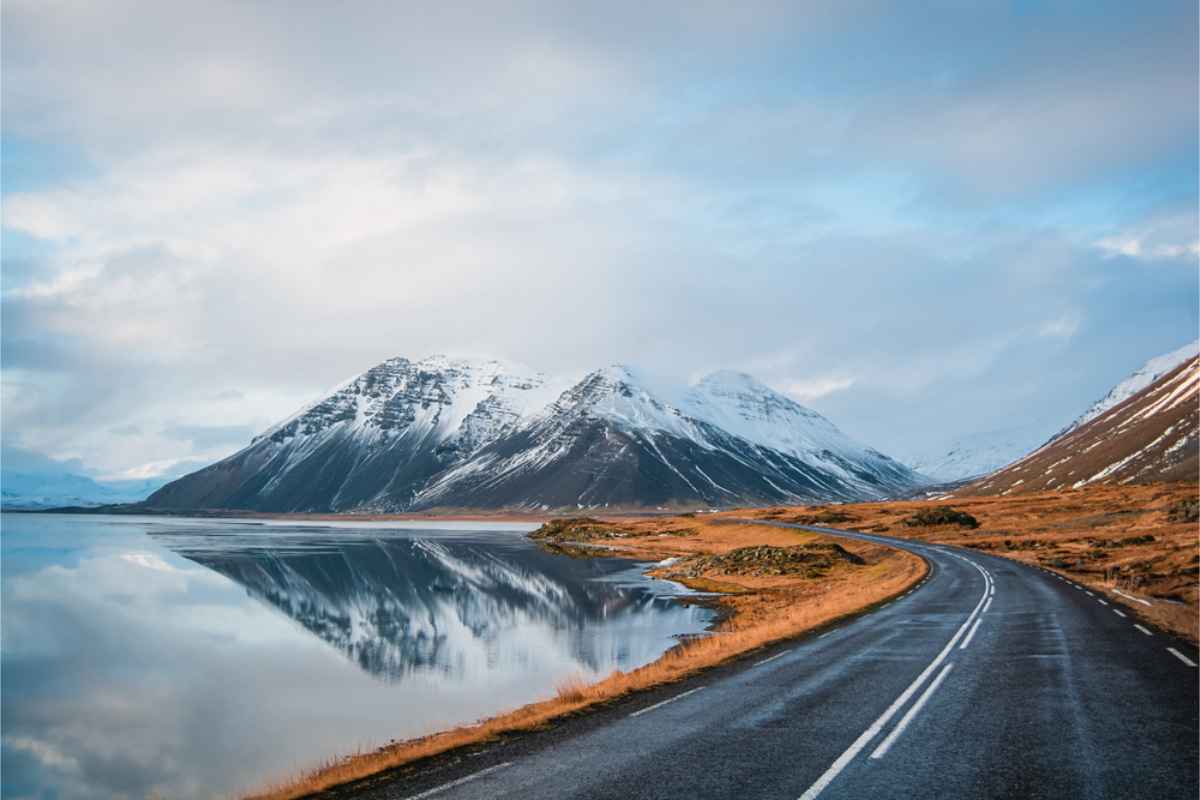
January to March: Northern Lights and Snow Adventures
You’re now smack-bang in the middle of our off-season, and you’ll be met with some of the lowest prices you’ll ever find on the island. Similar to October and November, the weather is the cause of this low season, and you can expect temperatures of -3 to 3 degrees Celsius (27 to 37 degrees Fahrenheit) with plenty of snow and ice.
Once again, don’t let the weather scare you off. With a little bit of research and planning, you’ll still be able to have the road trip of a lifetime, especially if you stick to our well-maintained main roads like the Ring Road. You’ll thank us when you realize how often you have some of our most famous attractions all to yourself.
April and May: Better Weather Without the High Prices
April and May have you heading towards the summer season, which means you can have many of the summer weather and daylight perks without the peak season prices. You can look forward to temperatures of 0 to 10 degrees Celsius (32 to 50 degrees Fahrenheit), and you can start looking out for our Puffins and migratory whales.
Another perk is that many of the roads that are kept closed throughout the colder months start reopening during this time. All in all, a great period for doing a proper road trip without paying the price for it.
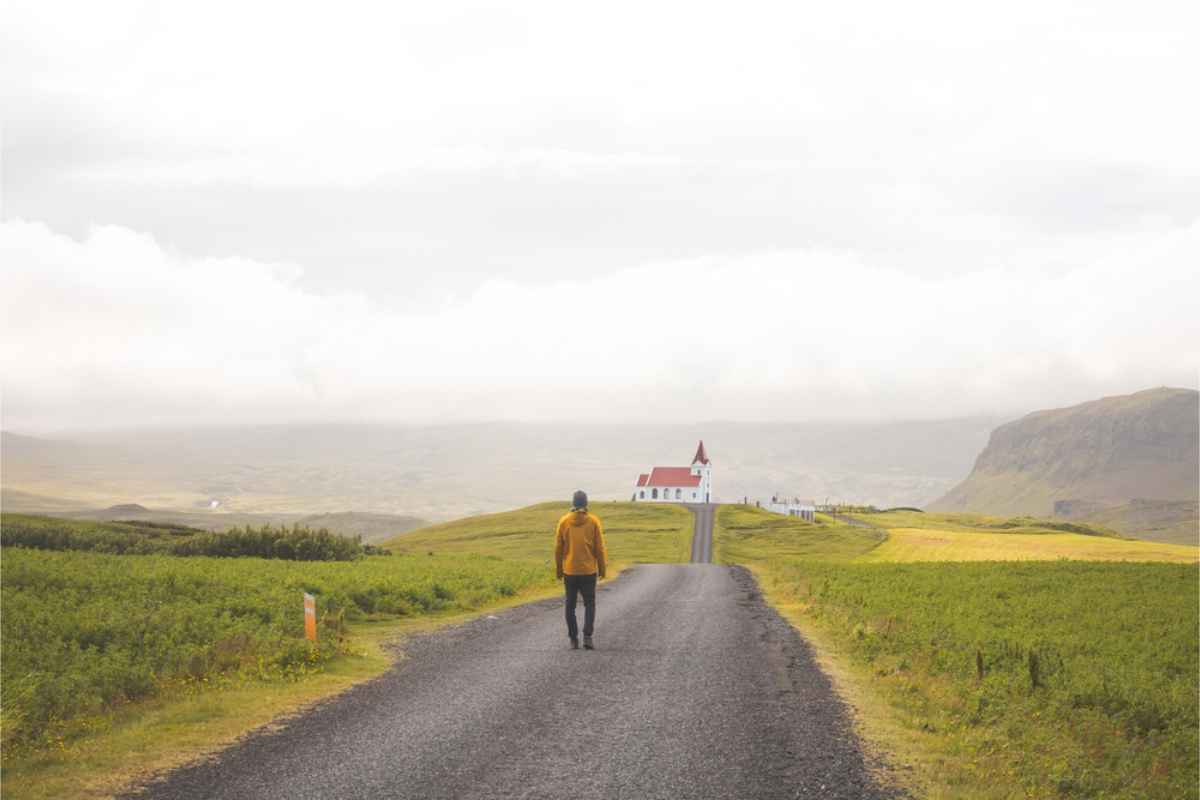
What to Expect When Traveling Iceland in the Off-season
When it comes to conditions (other than the weather) here on the island, you can expect the following:
Daylight Hours and Road Conditions
Daylight hours can vary dramatically throughout the off-season. You’ll be going from just 4 hours every day in December to 10 hours in March and then up to 13 hours in April. Similarly, road conditions will also change significantly throughout this period. Certain roads, like the Ring Road, are open all year round.
These are well-maintained paved roads. It’s only in the north where these roads may hit a few snags during the colder months of the year (November to March) due to harsh weather conditions. But even some of our smaller gravel roads leading you to our famous attractions won’t be an issue during the colder months (as long as you rent the right vehicle with all the right gear).
However, this doesn’t mean one can be reckless on these roads during this time. Drive with caution, adhere to all the rules, and avoid those icy patches. With the arrival of spring in April, all the ice and snow from the colder months will start melting away. Just don’t expect this to happen overnight. You may well still have to navigate a few snow and ice patches till May, especially in the north.
Some of the F-roads in the Highlands may also slowly start reopening. Another time you may catch all roads open in the off-season is if you visit the island in September. Just remember to keep an eye on the road conditions and closures on the Umferdin website, and you can always travel well prepared.
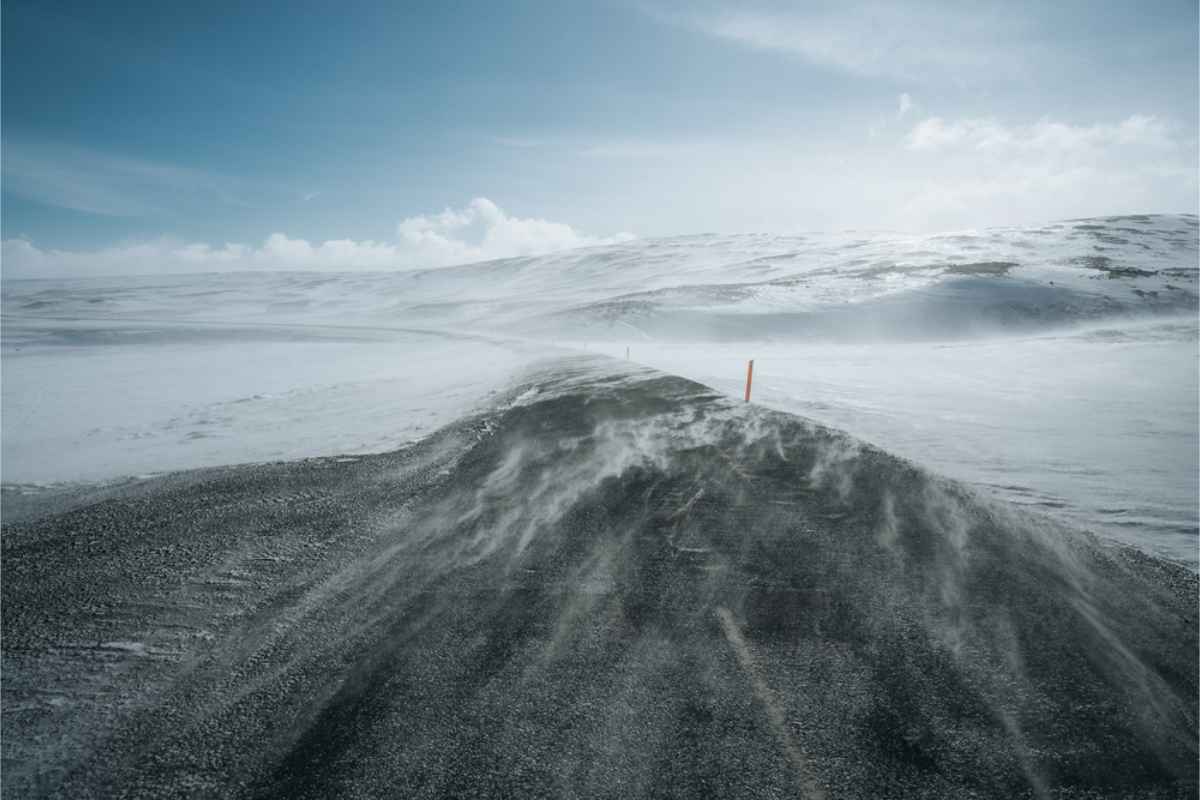
Campsites and Facilities: What’s Open and What’s Not
Generally, going camping with a motorhome is no problem during the off-season. But there are a few things you need to be aware of:
- Although we have many campsites that remain open all year round, especially in the southern part of the island, there are a few that close for the colder periods of the year. So, just double-check before ending up in front of a closed gate.
- Some campsites are closed, but will open for any campers who call them and make arrangements. This info is usually displayed on their websites.
- Understandably, some amenities may not be available at the campsites during our off-season, so this may be a bit of a disappointment. But then again, we’re pretty sure you won’t have much desire to play mini golf in the snow or go canoeing on a frozen lake.
Packing Tips for Off-season Travel
Due to the colder weather conditions you’ll find throughout most of the off-season, you’ll need to come prepared. This means plenty of warm layers – from thermals to thick jackets. Also, keep in mind that some rental agents don’t include bedding with their camper and motorhome rentals, so please double-check beforehand to ensure you have enough to keep the cold at bay.
Motorhome and campervan living is different from your regular holiday getaway. Storage space is limited (especially in the fridge), so you’ll need to focus a bit more on food that lasts longer than fresh produce. If you’re going to be traveling to our more remote areas, you also need to ensure that you stock up in the cities or towns before venturing out again (you don’t want to wake up and realize there will be no morning coffee that day).
Also, never buy water here in Iceland. We have some of the purest water on earth, and it’s available at your nearest tap completely free of charge. So, pack your refillable water bottle and just top up as you go. There are a few essential items that are often missed when people visit during our off-season.
These are sunscreen, sunglasses, and a flashlight. Many greatly underestimate the sun and the glare off of snow and ice during our colder months. And you’ll need light for those diminishing daylight days. We recommend taking a headlamp to keep your hands free.
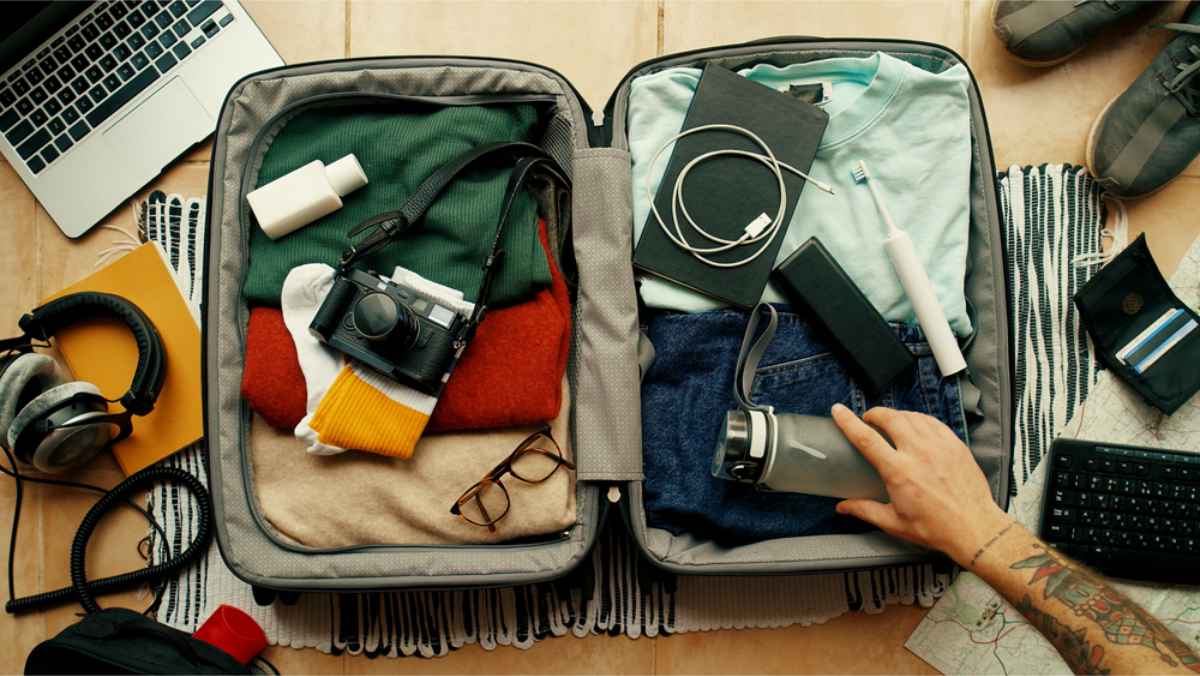
Free and Affordable Things to Do in Iceland
While Iceland may not be one of the cheapest travel destinations, you’ll be glad to know that the island offers many exciting things to see and do without having to pay a single cent. These include the following:
Checking Out Our Waterfalls
Irrespective of the Season
Iceland has over 10,000 of them, so there are more than enough to fill an entire itinerary with. Just make sure you don’t miss out on some of our most famous falls, such as Svartifoss, Seljalandsfoss, Dettifoss, and Goðafoss.
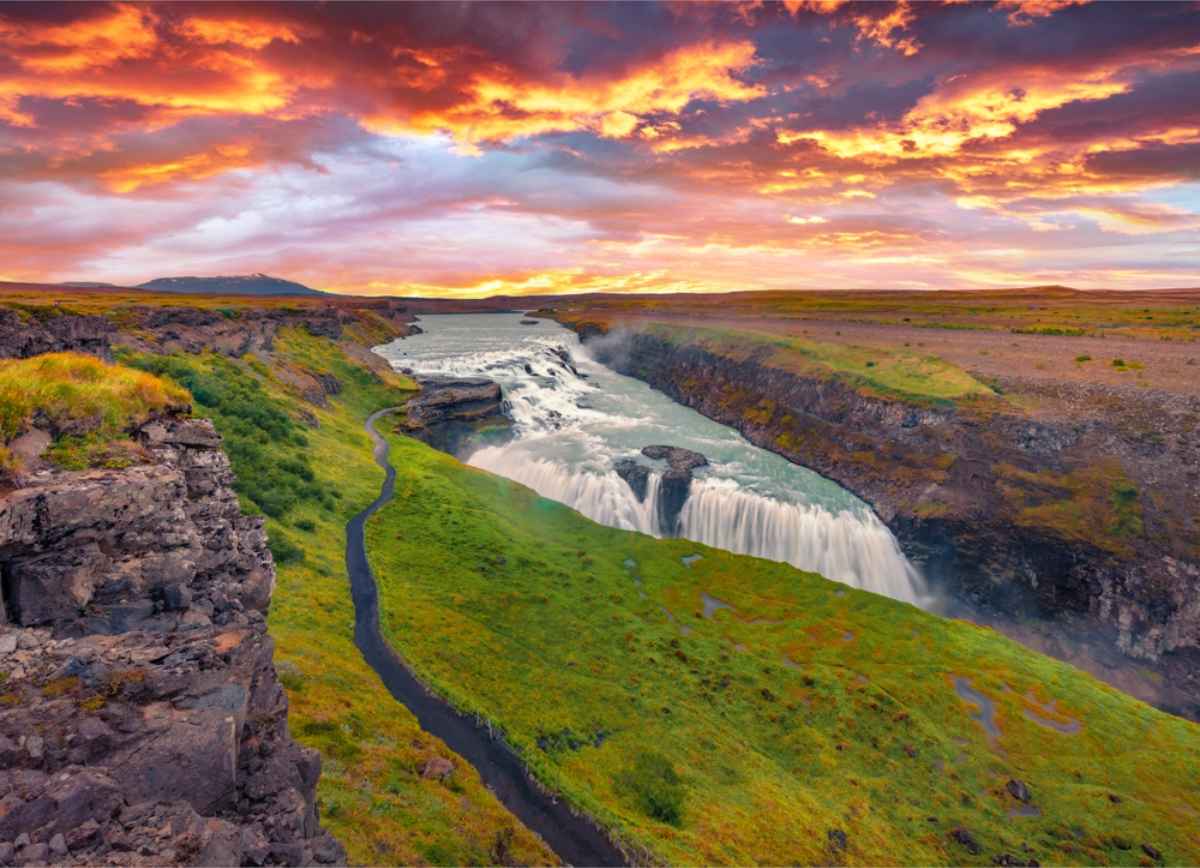
Take a Dip in a Hot Spring
Irrespective of the Season
Another key characteristic of Iceland is our natural hot springs. This is due to the volcanic activity on the island heating our underground water supply. Many of these sites are either entirely free or can be accessed by giving a small donation. These include Kvika Footbath, Gudrunarlaug, Seljavallalaug, and Reykjadalur Hot Spring River.
Take a Stroll on a Black Sand Beach
Irrespective of the Season
A stroll on one of our beautiful black sand beaches is entirely free and will genuinely take your breath away with views over the ocean and black basalt cliffs lining the coastline. Some of our must-visit beaches include Reynisfjara and Diamond Beach.
Go Hiking
During the Warmer Shoulder Months
There’s a wide variety of hiking trails scattered across the island. They range from short hikes and day hikes to long, multi-day treks. Unless you’re planning on getting a guide for these hikes, this is yet another activity on the island that’s completely free. Be sure to check out shorter hikes like the Glymur Waterfall hike or longer hikes like the Laugavegur Trail.
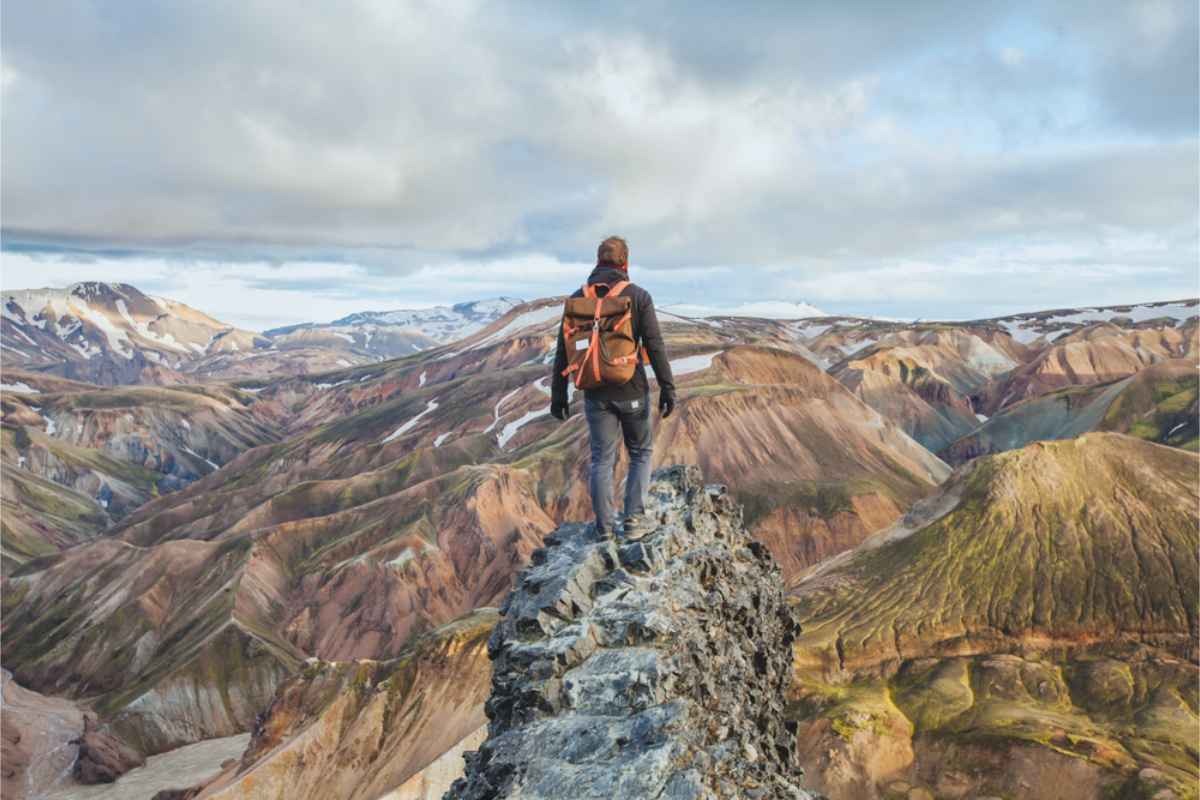
Hunt Down the Northern Lights
During the Colder Months, Especially Wintertime
When conditions are just right, the air is dry, the temperature is cold, and there’s little to no light pollution, you’ll be able to see the bright neon lights of the Aurora Borealis dancing across the sky.
A Variety of Attractions and Activities at Discounted Prices
Irrespective of Season
Get yourself the Reykjavik City Card if you’d like to get free and discounted access to a wide range of attractions and activities in and around the capital city. This includes various landmarks, museums, and even tours such as whale watching boat tours! What’s more, the card grants you access to all hop-on-hop-off bus services within the city, so getting to the various sites is no problem.
Cheapest Time to Go to Iceland: Our Final Recommendations
As you can see, the cheapest time to visit Iceland is during our off-season: late fall (October to November), winter (December to March), and spring (April to May). To save even more during your off-season Iceland adventure, follow our helpful tips and advice:
- By making advanced bookings or having flexible trip dates to play around with, you’ll be able to find quite a few good deals, from flights, accommodation, attractions, and more.
- Avoid weekends, public holidays, and school holidays, and you’ll also be met with many discount prices.
- Remember to ask your rental agent about any discounts they can offer due to agreements with local businesses (this also includes gas stations!).
- Also, remember that a Camping Card is a must on all the off-season months, except for the winter months when the Camping Card is not valid. A Camping Card costs just €179 and gives a family of 2 adults and up to 4 children under the age of 16 access to numerous campsites across the island for stays of up to 28 days. This means massive savings when you consider that most campsites charge between $10 and $20 per person per night!
- When fueling up, remember that self-service gas stations tend to be cheaper.
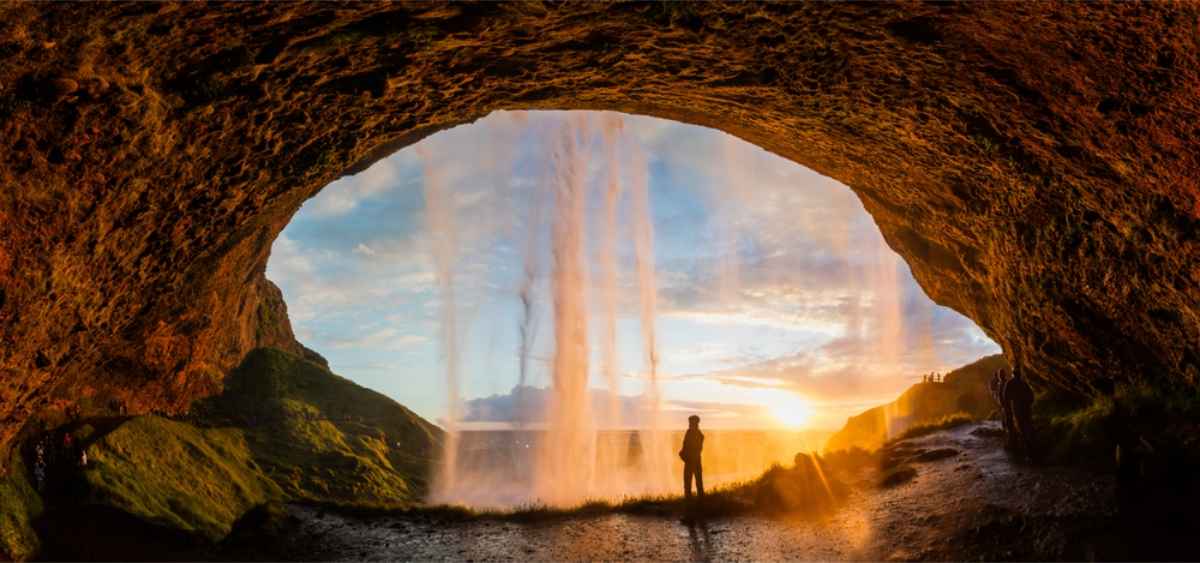
A Few Low-cost Itineraries
Looking for some cost-effective inspiration? You can use the below itineraries as is or customize them further:
3-Day Budget Motorhome Itinerary
Day 1: Explore Reykjavik, everything from Hallgrimskirkja, the harbor, and our famous hot dog stand, Baejarins Beztu Pylsur.
Day 2: Explore the Golden Circle and visit spots such as Thingvellir National Park, Geysir Geothermal Area, and Gullfoss Waterfall.
Day 3: Cruise down and explore a bit of the south coast before heading back to the capital city.
5-Day Budget Motorhome Itinerary
Follow the 3-day itinerary above, but then…
Day 4: Explore the diverse landscapes of Snaefellsnes Peninsula (also known as “mini Iceland.”)
Day 5: Take your time returning to the capital city, and, if the budget allows, splurge on a little soak in the Blue Lagoon.
7-Day Budget Motorhome Itinerary
Follow the 5-day itinerary above, but then…
Day 6: Travel further down the south coast and sleep over near Vik.
Day 7: Head back to Reykjavik and stop at all the interesting sights along the way. Also, ensure you catch any sights in the capital city you may have missed on day 1.
Ready to Trade a Bit of Sunshine for Super Savings?
The cheapest time to visit Iceland is during our off-season. And while the sun may not be at its summer strength, this period is jam-packed with super savings. Use our article as a guide to pinpoint exactly when to land here on the island, rent your motorhome in Iceland, and begin your Icelandic road trip. So, skal to affordable adventures and the freedom of the open road! Happy travels!

